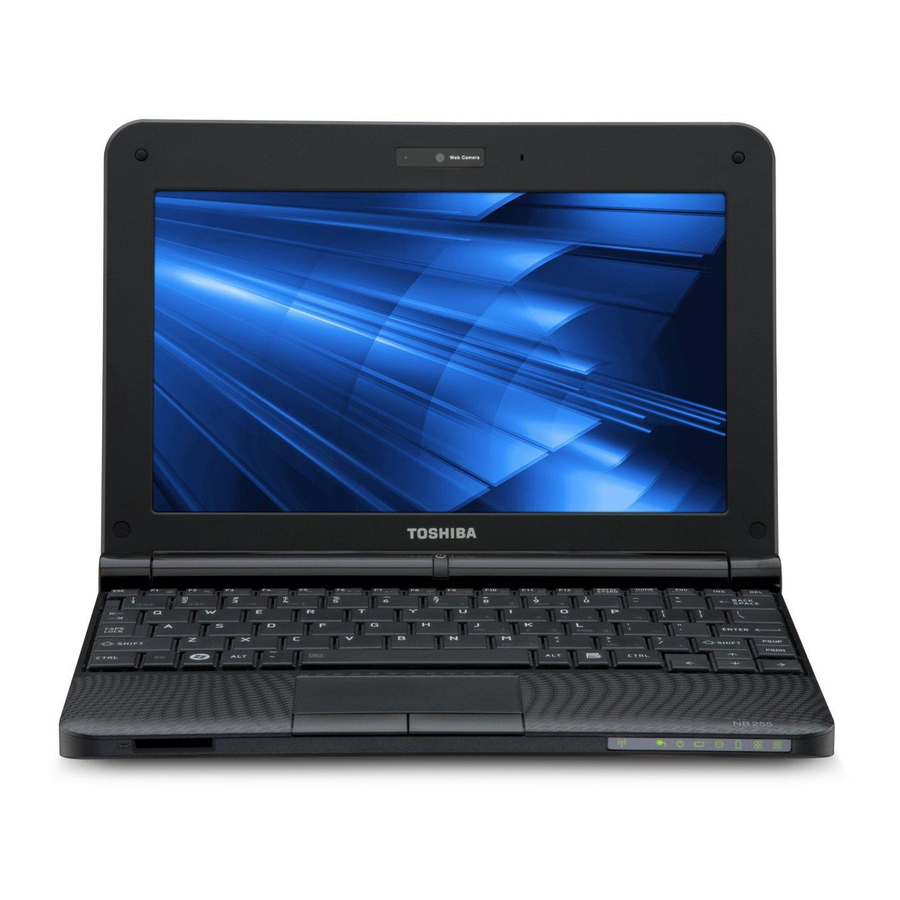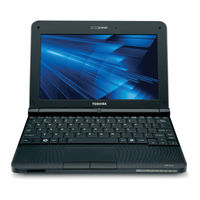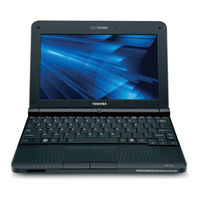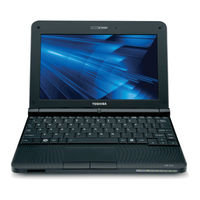
Toshiba mini NB250 series Manuals
Manuals and User Guides for Toshiba mini NB250 series. We have 5 Toshiba mini NB250 series manuals available for free PDF download: Maintenance Manual, User Manual
Toshiba mini NB250 series User Manual (197 pages)
NB255-N240 User's Guide
Table of Contents
-
Introduction24
-
This Guide26
-
Safety Icons27
-
-
-
-
Traveling Tips110
-
-
-
TOSHIBA Assist121
-
Secure122
-
Protect & Fix123
-
Optimize124
-
-
Mouse Utility131
-
-
-
Memory Problems144
-
Display Problems146
-
-
Error-Checking148
-
-
Printer Problems150
-
-
Hot Key Cards161
-
-
Card Case164
-
Advertisement
Toshiba mini NB250 series Maintenance Manual (222 pages)
Table of Contents
-
-
-
-
Memory Check78
-
-
FDD Test86
-
Memory Check88
-
LAN Test95
-
RTC Test98
-
D-Gsensor99
-
1Sthddtest102
-
Toshiba Logo Set107
-
Tp Type R/W Test112
-
EEPROM Setting115
-
-
General127
-
Before You Begin130
-
Symbol Examples133
-
Battery134
-
Hdd136
-
Removing the HDD136
-
Memory139
-
WLAN Card141
-
Touch Pad156
-
Motherboard157
-
LCD Module167
-
-
System Board182
-
-
Toshiba mini NB250 series Maintenance Manual (222 pages)
Personal Computer
Table of Contents
-
-
-
FDD Test77
-
Memory Check78
-
FDD Test86
-
Memory Check88
-
LAN Test95
-
RTC Test98
-
D-Gsensor99
-
1Sthddtest102
-
Toshiba Logo Set107
-
Tp Type R/W Test112
-
EEPROM Setting115
-
-
-
General127
-
Before You Begin130
-
Symbol Examples133
-
Battery134
-
Hdd136
-
Removing the HDD136
-
Memory139
-
WLAN Card141
-
Touch Pad156
-
Motherboard157
-
LCD Module167
-
-
System Board182
-
-
Advertisement
Toshiba mini NB250 series User Manual (142 pages)
Table of Contents
-
Preface12
-
Conventions13
-
Heat Injury16
-
Introduction18
-
Features20
-
Options29
-
Left Side32
-
Right Side34
-
Back Side34
-
Underside35
-
AC Adaptor40
-
-
Lan63
-
-
-
Troubleshooting100
-
-
System Start-Up102
-
Self Test102
-
Ac Power103
-
Hard Disk Drive106
-
Touch Pad106
-
Usb Mouse107
-
Sound System109
-
-
TOSHIBA Support111
-
-
Cpu*1113
-
Battery Life*3114
-
Lcd115
-
Wireless LAN*7115
-
Copy Protection115
-
Specifications117
-
-
Toshiba mini NB250 series User Manual (130 pages)
Table of Contents
-
-
Left Side29
-
Right Side30
-
Back Side31
-
Underside31
-
AC Adaptor35
-
-
Lan57
-
-
-
Cpu*1103
-
Battery Life*3104
-
Lcd104
-
-
-
Wireless LAN*7105
-
Copy Protection105
-
Specifications106
-
-
-
-
Wireless LAN108
-
-
Advertisement




